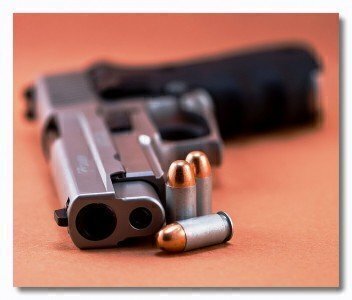Fearing that an appeal to the Supreme Court could bring a nationwide ruling against gun control, officials of the local government in the nation’s capital have abandoned the defense of a strict law limiting the right to carry a concealed handgun outside the home.
 Their decision will thus keep out of the reach of the Justices a highly visible case that could have clarified the scope of the Constitution’s Second Amendment right to “keep and bear arms.” And the decision came as the public conversation over gun control has intensified following the latest mass shooting in America, in Las Vegas last Sunday.
Their decision will thus keep out of the reach of the Justices a highly visible case that could have clarified the scope of the Constitution’s Second Amendment right to “keep and bear arms.” And the decision came as the public conversation over gun control has intensified following the latest mass shooting in America, in Las Vegas last Sunday.
On Friday, a federal appeals court put into effect a decision made in July that struck down the District of Columbia’s concealed handgun carry law. The court took that action after refusing the local government’s plea to reconsider the July ruling by the full, or en banc, court of appeals, and after officials decided against taking the issue to the Supreme Court.
The city’s attorney general, Karl A. Racine, told a news conference on Thursday that, had the case been pursued in the Supreme Court, “an adverse decision…could have wide-ranging negative effects not just on District residents, but on the country as a whole.” A member of the City Council, Charles Allen, added that an appeal would have involved “a risky gamble that we can’t afford to lose….There is little or no evidence that a majority of the Justices would rule in our favor.”
Although the Supreme Court has refused repeatedly in recent years to clarify just how far the Second Amendment right to carry a gun extends beyond one’s own home, there might have been a good chance that the Justices could take on the District’s case because there is now a basic split in federal appeals courts on the issue surrounding gun rights outside the home. That kind of dispute in interpreting the Constitution often leads the Supreme Court to step in to resolve the controversy.
A local law in the District flatly forbids any open carrying of handguns in public. That was not an issue in the local case. What was at stake was a provision that barred a license to carry a concealed handgun in public unless the person could show a “good reason” why they needed a gun for self-protection in public areas. The U.S. Court of Appeals for the District of Columbia, in its 2-1 ruling in July, found that restriction amounted to a virtual ban on public carrying of handguns, and concluded that it violated the Second Amendment.
In the wake of the decision by local officials to avoid further attempts in court to defend the local law, individuals who formerly were turned down for permits because they lacked a “good reason” to have a handgun in public are now eligible to file a new application for a permit.
Although the “good reason” requirement is now unenforceable, local officials stressed that the remainder of their concealed carry law remains in force, and that puts a significant number of restrictions on whether or where concealed handguns are allowed. For example, handguns must be registered, those with various criminal convictions are not eligible for a permit, there are restrictions on permits for persons with mental health histories, and handguns cannot be carried at all in certain places – such as schools, local government buildings, on buses and subway trains, in stadiums or arenas, near the White House and near the residence of the Vice President in northwest Washington, among many other spots in the city.
The District of Columbia government’s attempts to regulate handguns within the city led to the Supreme Court’s famous 2008 decision that, for the first time, found in the Second Amendment a personal right to have a gun. That ruling, though, was confined to having a gun for self-defense within one’s own home.
After the Justices in 2010 extended that new right nationwide, beyond the District of Columbia, the Supreme Court has repeatedly refused to hear more than a dozen cases seeking clarification of the nature of Second Amendment rights outside the home. Last June, for example, the Justices refused to hear an appeal by gun rights advocates challenging a California state law that limited the Second Amendment as it applied outside the home.
It was only after that most-recent refusal that a direct conflict among federal courts of appeals developed with the D.C. Circuit Court’s ruling on the local law limiting concealed carry in public. The development of that conflict pushed the District case into greater national prominence, as a potential case for the Justices to use as a vehicle to say something further about gun rights in public spaces.
Legendary journalist Lyle Denniston has written for us as a contributor since June 2011 and has covered the Supreme Court since 1958. His work also appears on lyldenlawnews.com.






